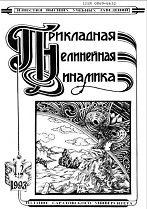|
NONLINEAR DYNAMICS AND NEUROSCIENCE
Periodic modes of group dominance in fully coupled neural networks
S. D. Glyzin, A. Yu. Kolesov
Yaroslavl State University, Russia
Abstract:
Nonlinear systems of differential equations with delay, which are mathematical models of fully connected networks of impulse neurons, are considered. Purpose of this work is to study the dynamic properties of one special class of solutions to these systems. Large parameter methods are used to study the existence and stability in considered models of special periodic motions — the so-called group dominance or $k$-dominance modes, where $k\in\mathbb{N}$. Results. It is shown that each such regime is a relaxation cycle, exactly $k$ components of which perform synchronous impulse oscillations, and all other components are asymptotically small. The maximum number of stable coexisting group dominance cycles in the system with an appropriate choice of parameters is $2^{m}-1$, where $m$ is the number of network elements. Conclusion. Considered model with maximum possible number of couplings allows us to describe the most complex and diverse behavior that may be observed in biological neural associations. A feature of the $k$-dominance modes we have considered is that some of the network neurons are in a non-working (refractory) state. Each periodic $k$-dominance mode can be associated with a binary vector $(\alpha_{1}, \alpha_{2},\dots,\alpha_{m})$, where $\alpha_{j} = 1$ if the $j$-th neuron is active and $\alpha_{j} = 0$ otherwise. Taking this into account, we come to the conclusion that these modes can be used to build devices with associative memory based on artificial neural networks.
Keywords:
fully coupled neural network, chemical synapses, relaxation cycles, asymptotics, stability, buffering.
Received: 20.02.2021
Citation:
S. D. Glyzin, A. Yu. Kolesov, “Periodic modes of group dominance in fully coupled neural networks”, Izvestiya VUZ. Applied Nonlinear Dynamics, 29:5 (2021), 775–798
Linking options:
https://www.mathnet.ru/eng/ivp446 https://www.mathnet.ru/eng/ivp/v29/i5/p775
|

| Statistics & downloads: |
| Abstract page: | 83 | | Full-text PDF : | 48 |
|




 Contact us:
Contact us: Terms of Use
Terms of Use
 Registration to the website
Registration to the website Logotypes
Logotypes








 Citation in format
Citation in format 